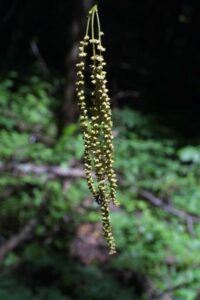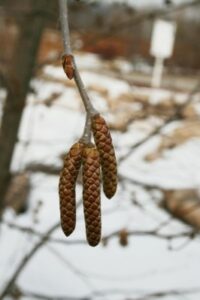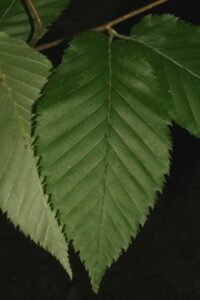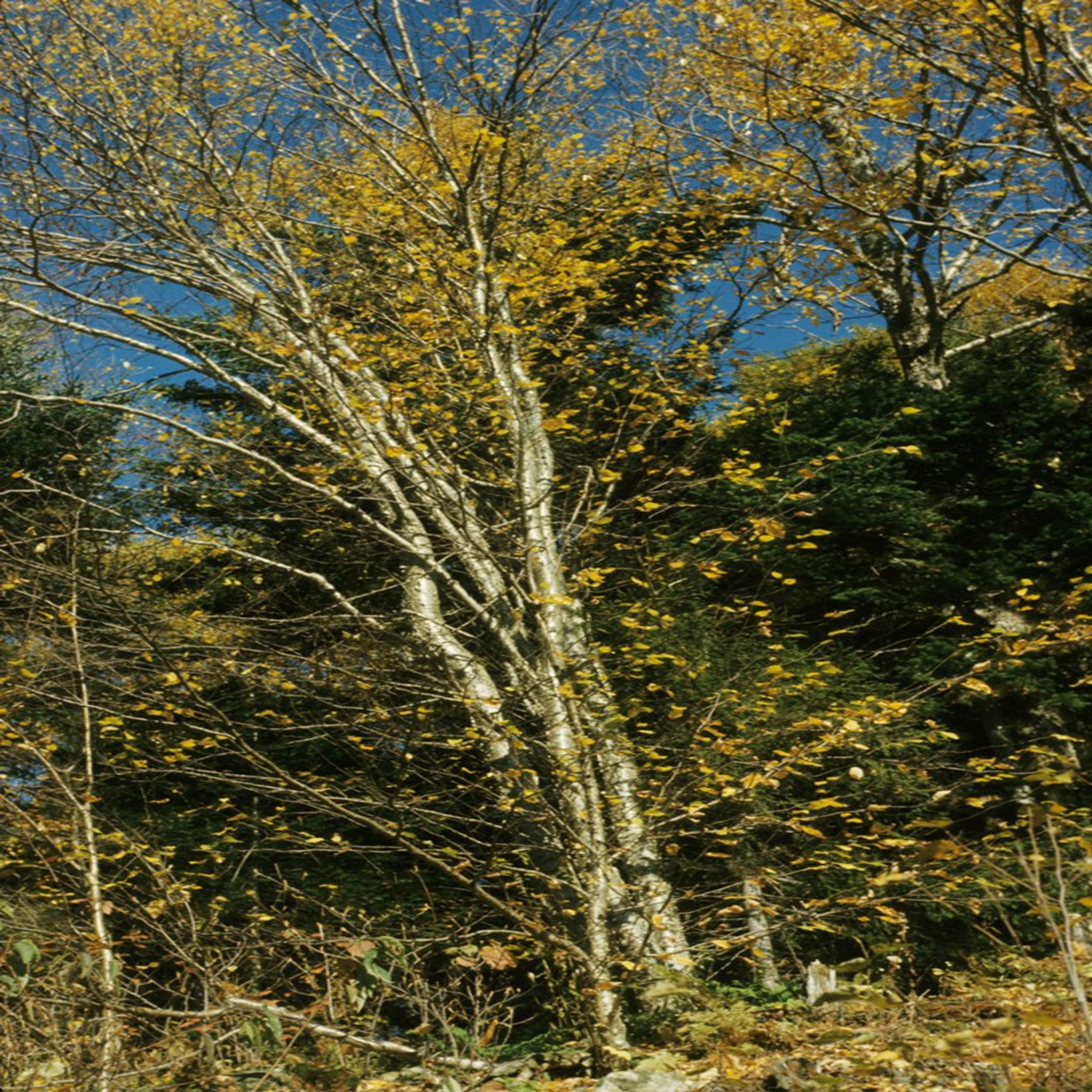Botanical Name:
Betula alleghaniensis
Family Name:
Betulaceae
Description:
Yellow birch is a large, aromatic tree with broad, rounded crown with drooping branches. It has a slight odor of wintergreen when the twigs and foliage are crushed. The common name pertains to the yellow color of the bark and fall leaves.
Size:
60-75’
Habitat and Range:
Yellow birch grows best in moist, well drained, rich, acidic soils with full sun to partial shade. They are found in hardwood forests around the Great Lakes region.
Attributes:
The bark is a shiny yellow to gray-silver that splits into curly strips and becomes a reddish brown as it grows older. The leaves are dull green above and yellow underneath changing into an incredible display of bright yellow and gold in the fall. The toothed leaves are roughly oval in shape, tapering to a point, and are placed alternately along the stems.
Wildlife Value:
The seeds of the yellow birch are eaten by various songbirds and small mammals. White-tailed deer consume a large number of yellow birch seedlings in the summer months.
Did you Know?
- Pollen grains released by the birch tree are responsible for 15% to 20% of hay fever cases in northern hemisphere.
- The sap of yellow birch can be tapped for use as edible syrup.
- Tea is sometimes made from the twigs and inner bark.
- Birch trees are one of the most widely used woods for veneer and plywood worldwide.
Benefits to Our Community (based on carbon dioxide sequestered, storm water runoff avoided, and air pollution removed each year):
Over the next 15 years, this tree will give back $90 worth of benefits to our community.




